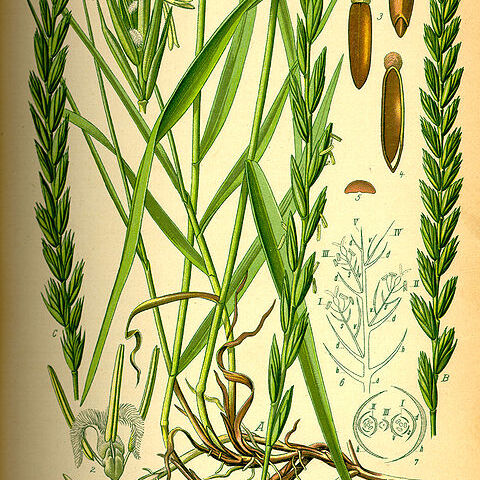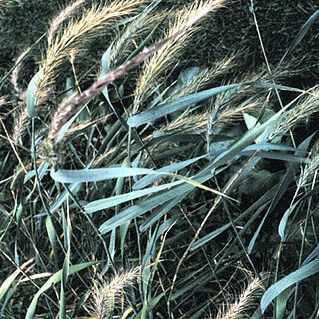Plants perennial, usually tufted, usually without, rarely with, rhizomes. Culms usually erect. Leaf sheath of cauline leaves split almost to base; auricles present or absent; leaf blade flat or rolled. Spike erect to nodding. Spikelets 1 or 2(–4) per node, sessile, rarely very shortly pedicellate, appressed to rachis, clearly laterally compressed, usually all similar, with 2–10 or more florets; rachis tough. Glumes opposite or side-by-side, linear-lanceolate to lanceolate-ovate, firmly membranous to leathery, 1–9(–11)-veined, not keeled, apex obtuse to shortly awned; veins ± raised. Lemma lanceolate-oblong, rounded abaxially, 5-veined, ± pubescent, apex obtuse or acute to awned, rarely toothed; veins connivent at apex; awn erect or reflexed. Palea shorter than or equaling lemma, apex retuse, subrounded, or acute. Caryopsis usually adherent to lemma and palea. x = 7.
Spikelets (1)2(–4) at each node of the spike, (1)2(–6)-fld, eventually disarticulating above (seldom below) the glumes and between the florets; glumes often narrow and awn-like, often displaced to form a false invol beneath the spikelets, seldom much reduced or even wanting; rachilla commonly twisted at base, bringing the florets into ± dorsiventral alignment with the axis; lemma long-awned or seldom awnless; self-pollinating perennial bunch-grasses with mostly flat lvs, short ligules, and small anthers, these mostly 1–3(–3.5) mm. (Hystrix, Sitanion) 75, N. Hemisphere.


